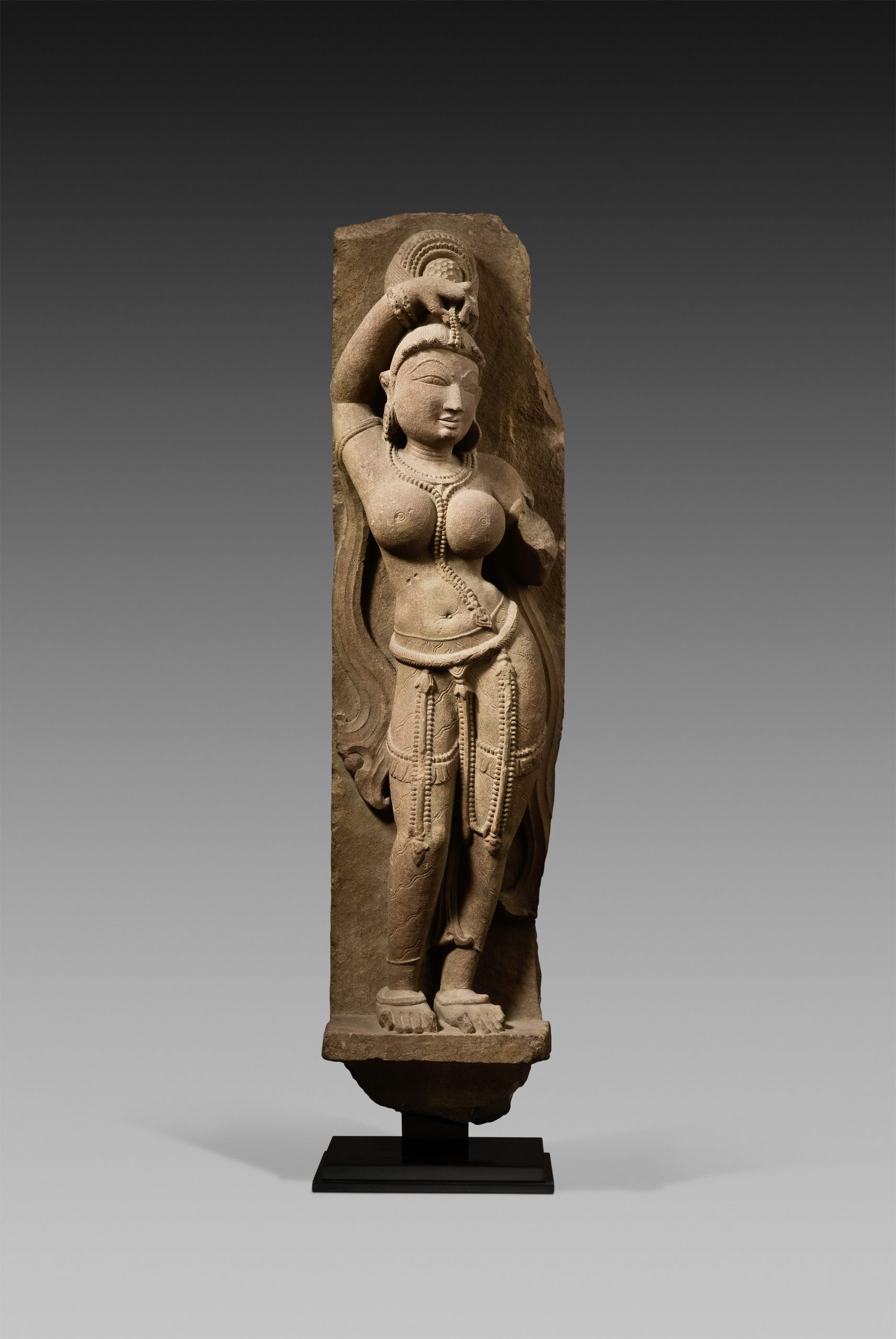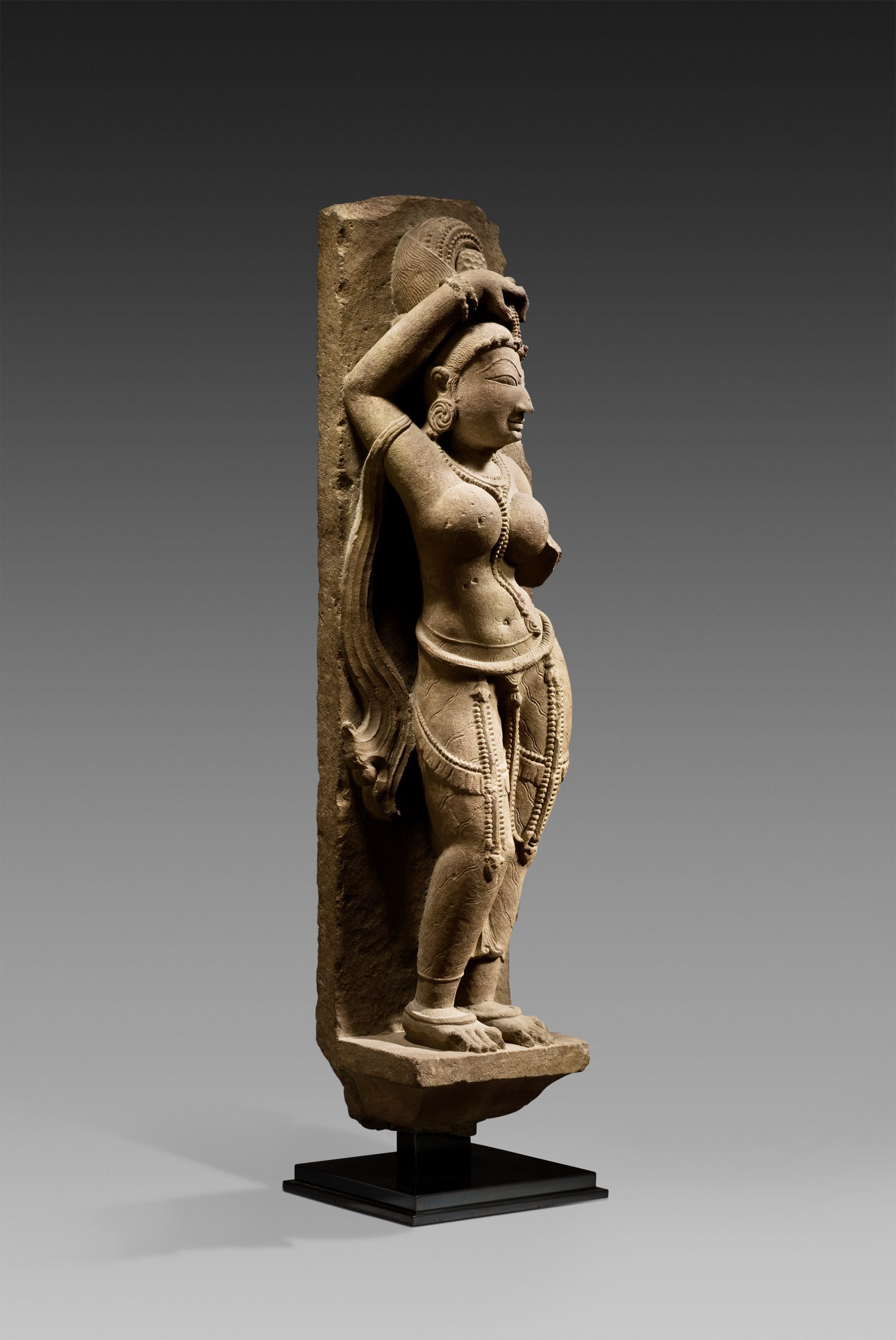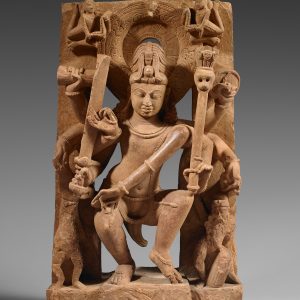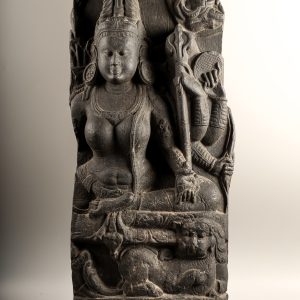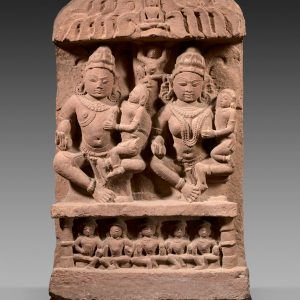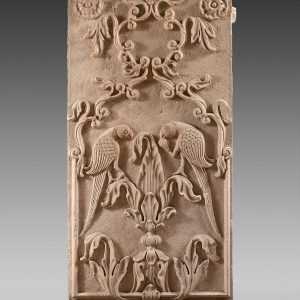Apsara
Pink sandstone
India, Madhya Pradesh -Khajurāho
Circa 11th century
H. 71cm
Description
The Apsarāḥ are the celestial dancers in Indra’s paradise. Their name means “moving in water”, in celestial vapor. While the Yakṣinī move in vegetation, the Apsarāḥ move in the atmosphere. Consequently, their bodies are not constructed of the gross substances of earth like flesh and bone, but of the attributes of air, so that they bend, stretch, leap and run. They belong to the Āvaraṇa-devatā, i.e. the surrounding deities of a principal figure, who appear sculpted on the walls of Hindu temples, their bodies supported by their immanent breath.
The Apsarāḥ shown here gracefully raises her right arm to carry an ornament to her head. The left hand, broken off, was most likely holding a mirror. In the tantric context of the 8th to 12th century period to which the sculpture belongs, the Apsarāḥ are considered the embodiment of the Great Śakti, the primordial power and substance of the world. As Śakti, they could be “mirror women”, and depicted as here, holding a mirror in their hand. The reflection of the face in the mirror is nothing in itself if separated from the face of the God or the Light of Bliss.
The abdomen has been sculpted with excellent, delicate realism. The curve of the hip dominates the lines of this obviously youthful body and is balanced by the counter-curve of the right arm, creating an “S” that glides sinuously across the body from the tip of the right hand to the right foot, producing a graceful, seductive and self-indulgent posture. Most probably, the sculpture belonged to one of the Khajurāho temples, built during the short-lived Chandela dynasty (10th-11th century), famous the world over for the erotic sculptures on their facades.
Provenance: Private collection, Barcelona, since the 1970s.

